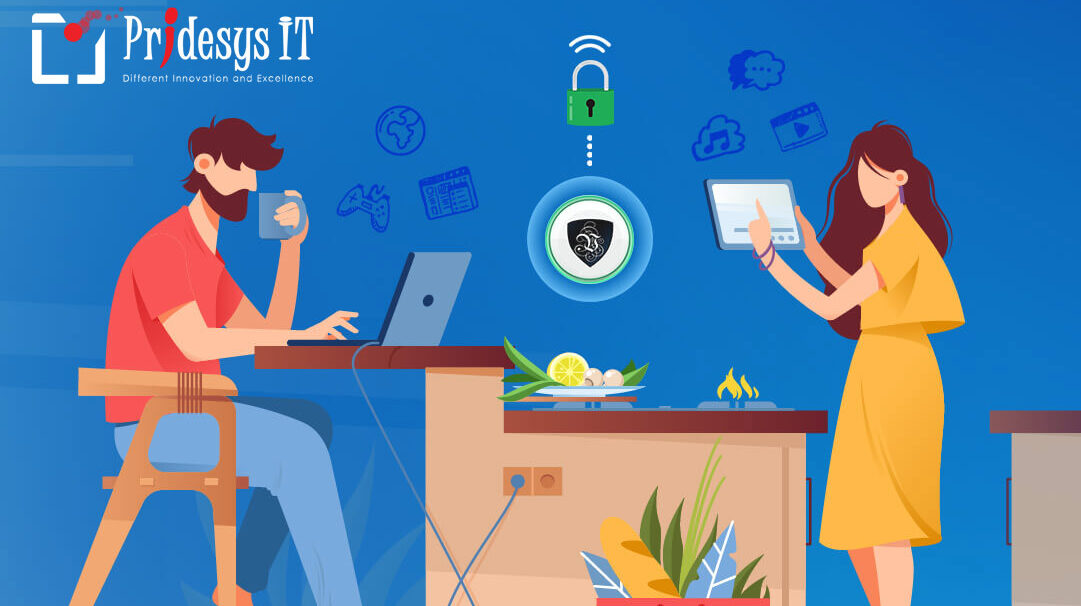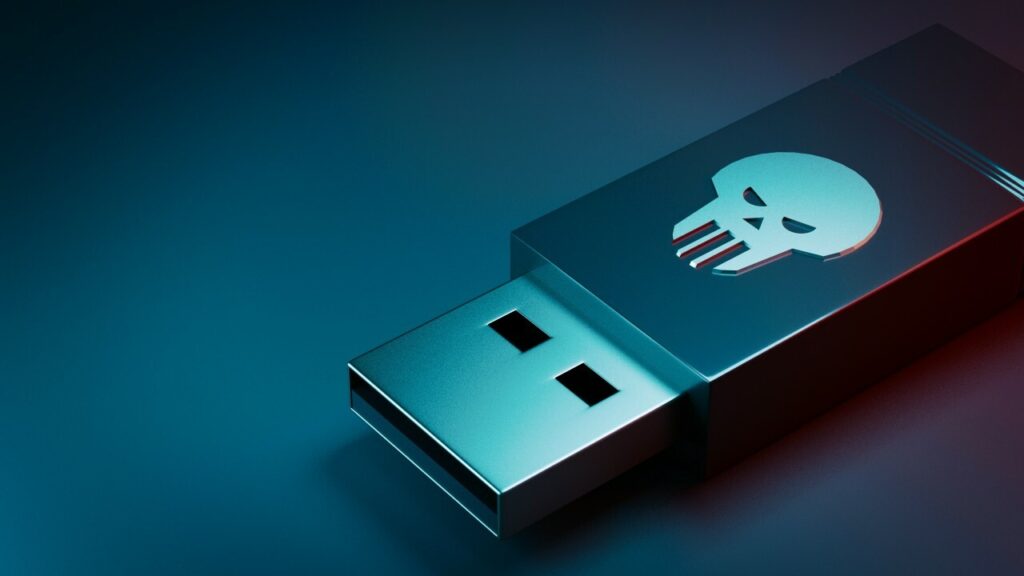
Nov 22, 2022
0 Comment by ViewersHuman error accounts for 95% of cybersecurity breaches, so your company must effectively manage employee cyber risk to prevent data leaks caused by user errors and ensure regulatory compliance. Continuous security awareness training for employees, which teaches them how to identify and resist new threats while also promoting best practices for maintaining a high level of security awareness, is an important component of a strong human risk management (HRM) program.
However, deciding to initiate this type of training raises a number of common issues, not the least of which is deciding which security awareness training topics to include.
This post will teach you which topics to include in your core security awareness training library for 2024, as well as how to start training your employees on them right away.

Phishing is one of the most effective ways for cybercriminals to strike. After doubling in 2020, phishing attacks increased steadily throughout 2021, with remote work making it increasingly difficult for businesses to ensure their users do not fall victim.
But, in 2024, why is phishing still a threat to businesses?
The sophistication of these types of attacks is one major factor. Attackers are using more sophisticated tactics to trick employees into disclosing sensitive information or downloading malicious documents.
Business email compromise (BEC), for example, is a common sort of phishing that uses prior knowledge about a specific individual, such as a company’s top executive, to create an attack that can be difficult to distinguish from a legitimate email.
Combining these increasingly sophisticated attacks with the widespread perception that phishing is “easy to detect,” it’s not surprising that many firms anticipate a phishing-related breach in 2022.
Security awareness training must equip employees to identify contemporary phishing attempts and report them immediately upon suspicion of being targeted.

Removable media is another area of security concern that businesses frequently address. It is a portable storage medium that enables users to transfer data from one device to another, and vice versa. End users may become infected when they connect to a USB device containing malware.
Researchers at the University of Illinois Urbana-Champaign carried out an experiment by dropping nearly 300 USB sticks across campus. Surprisingly, the finders took 98% of these drives. Furthermore, the finders accessed the contents of 45% of the drives they retrieved.
Your employees must understand the risks, as well as how to use these devices safely and ethically in your organization. A corporation may decide to use removable media in their environment for a variety of reasons. However, like any technology, there will always be risks. It is critical that your employees secure the data on these devices in addition to the devices themselves. All data, personal or corporate, has a monetary value.
Here are a few common examples of removable media that you and your employees may use in the workplace:
This security awareness topic should be covered in your training, along with examples of removable media, the reasons why businesses use it, and how your employees can avoid risks such as lost or stolen removable devices, malware infections, and copyright infringement.

Password security is a basic but frequently ignored component that may assist your company’s safety. Malicious actors will often guess commonly used passwords in order to gain access to your accounts. Employees who use basic passwords or have recognized password patterns make it easy for cybercriminals to access a wide range of accounts. Once stolen, cybercriminals can either make this information public or sell it for profit on the deep web.
Using random passwords makes it considerably more difficult for hostile actors to obtain access to a variety of accounts. Other measures, such as two-factor authentication, provide further levels of protection to protect the account’s integrity.

If you’re one of those people who keeps their passwords on sticky notes on their desk, you should get rid of them. Keeping crucial physical documents secure is critical to the integrity of your company’s security system, even if many attacks are likely to occur through digital channels.
Simply being aware of the dangers of leaving papers, unattended laptops, and passwords lying about the workplace or at home will help to lessen the security risk. Adopting a ‘clean desk’ strategy can significantly reduce the likelihood of unattended paper theft or copying.

The changing landscape of IT technology has increased the capacity for flexible working environments while also allowing for more sophisticated security attacks. With more people now able to work on the move via mobile devices, greater connectivity has raised the potential for security breaches. For smaller businesses, this can be an efficient approach to saving money; nevertheless, user-device responsibility will become an increasingly important feature of training in 2024, particularly for traveling or remote personnel. With the introduction of harmful mobile apps, the chance of mobile phones harboring malware has grown, potentially leading to a security breach.
Online best practices courses for mobile device workers can help educate staff on risk avoidance without requiring expensive security mechanisms. To prevent the loss or theft of a mobile device, it is crucial to password-protect, encrypt, or safeguard important information with biometric authentication. When employees operate their own devices, we must train them on the safe use of personal gadgets.
The best community practice is to require workers to sign a mobile security policy.

In 2021, there will be a clear necessity for remote working, along with rising adoption. This trend has resulted in numerous organizations making significant strides towards implementing full-time work-from-home policies. Remote working may be beneficial to businesses and empowering for people, encouraging improved productivity and better work-life balance. However, when employees lack proper training on the risks of remote working, this development heightens the risk of security breaches. When not in use, keep personal devices for work secure and install anti-virus software. If a corporation wishes to provide this incentive, it should prioritize teaching remote employees safe workplace practices.
We anticipate this trend to persist until 2022. Though we want to see offices reopen and normal working lives resume, firms are increasingly hiring remote employees, and individuals who have acclimated to the WFH lifestyle may prefer to work this way. Training personnel to understand and manage their own cybersecurity is clearly necessary. As we’ve seen, there is a rising danger environment targeting these folks. Ensuring that they keep security at the forefront of their minds is a critical element of 2024.

Some employees who need to work remotely, travel on trains, or work on the go may require additional training in learning how to use public Wi-Fi connections properly. Fake public Wi-Fi networks, which frequently masquerade as free Wi-Fi in coffee shops, might expose end-users to inputting sensitive information into insecure public servers.
Educating your users on the proper usage of public Wi-Fi and common warning signs of a possible scam will raise company awareness and reduce risk. WIRED magazine offers a useful guide on avoiding the dangers of public Wi-Fi.

In enterprises, cloud computing has revolutionized data storage and accessibility. These digital applications are still transforming enterprises. The remote storage of enormous volumes of sensitive data heightens the potential for large-scale hacking. Many large corporations are attempting to preserve their data. But by selecting the correct cloud service provider, cloud storage may be a much safer and more cost-effective option to store your company’s data.
Insider hacking, like the other concerns highlighted, is a far bigger threat than large-scale cloud firms. Gartner expects that by next year, the end user will be responsible for 99% of all cloud security problems. As a result, cyber security awareness training may assist employees in making secure use of cloud-based technologies.

We all share significant portions of our lives on social media, from holidays to activities to work. However, oversharing might expose important information, making it easier for a hostile actor to appear as a trustworthy source.
Educating employees on how to protect the privacy settings on their social media accounts and preventing the spread of public company information will reduce the risk of hackers gaining leverage from this access to your personal network.

Some employees may have already exposed themselves to data breaches by using basic or repetitive emails for multiple accounts. According to one survey, 59% of end users use the same password for all accounts. This suggests that if a hacker compromises one account, they could use the same password to access all the user’s information across the other accounts.
Websites frequently offer free malware-tainted software, Downloading apps from reliable sources is the best approach to safeguarding your computer from installing any harmful software. Educating staff on safe internet habits should be a significant aspect of any IT introduction, although this training may seem apparent to some. It is a critical component of any security program’s safety.
Significant data breaches have affected many well-known websites in recent years; If you submitted your information to these sites, it may have become public, exposing your personal information.

Bad actors frequently use social engineering, a tactic that involves offering lucrative baits or impersonating others to gain workers’ trust and obtain vital personal information. We must teach employees security awareness subjects such as the most prevalent social engineering tactics and the psychology of influence (such as scarcity, urgency, and reciprocity) to help them resist these dangers.
For example, hostile actors may impersonate potential customers or offer incentives to mistakenly obtain private information, highlighting the need for security awareness training to educate staff about the risks of such impersonations and reduce the risk of social engineering.

Unfortunately, once you leave the office, malevolent actors continue to pose a threat. Many businesses enable their staff to use personal devices. Despite the cost savings and increased flexibility in working hours, this practice has some risks. Downloading malware on personal devices could potentially compromise the integrity of the company’s network, particularly if it compromises log-in credentials.
Furthermore, the expanding network of digital resources available to employees and businesses has enhanced connectedness and productivity. These programs, however, represent a risk to the user. According to Propeller research, phishing tactics targeting Dropbox had a 13.6% click-through rate. Reduce the risk by increasing staff comprehension, exchanging encrypted material, and verifying downloads.
You can Also Read: Cybersecurity: Types, Elaboration And All